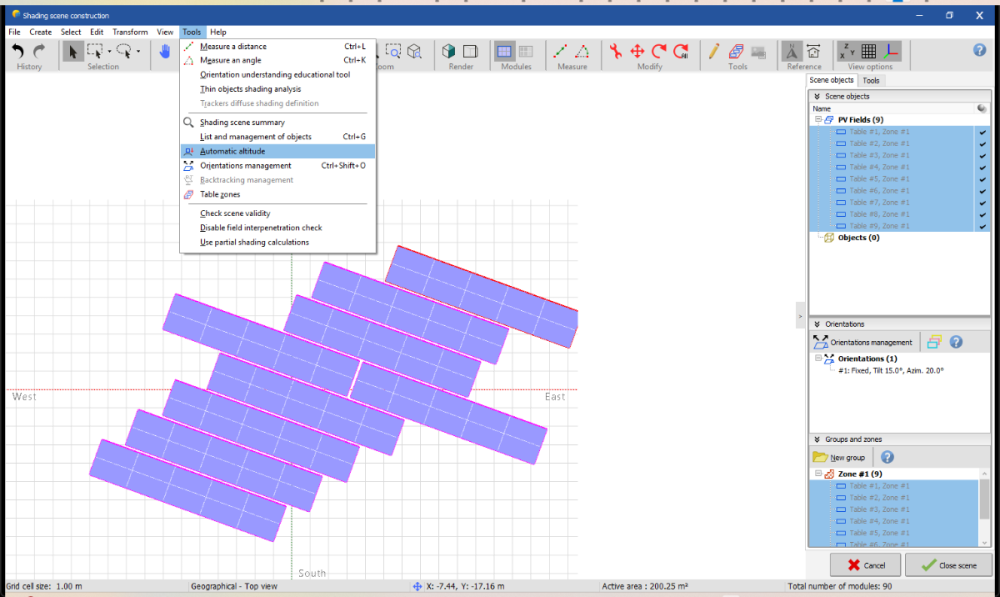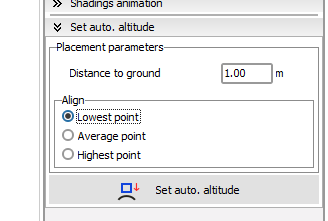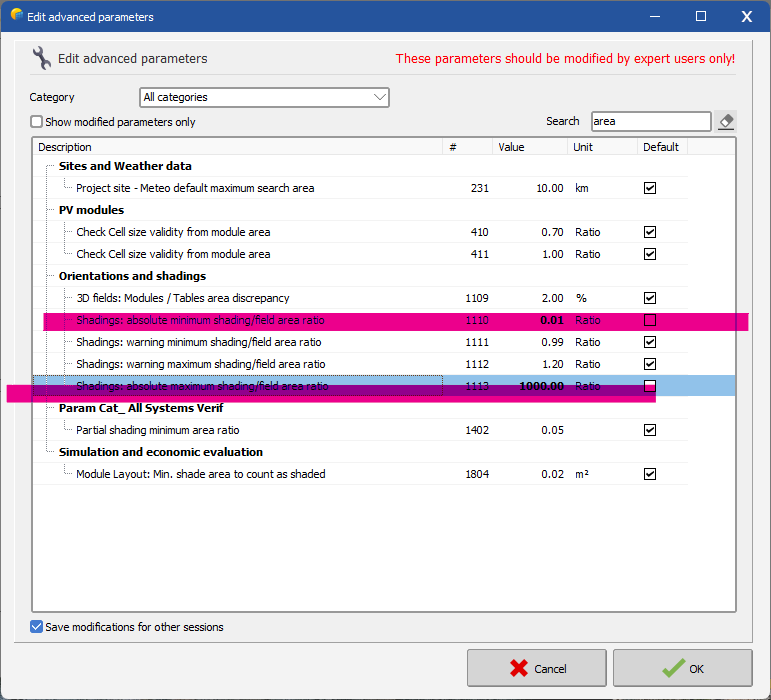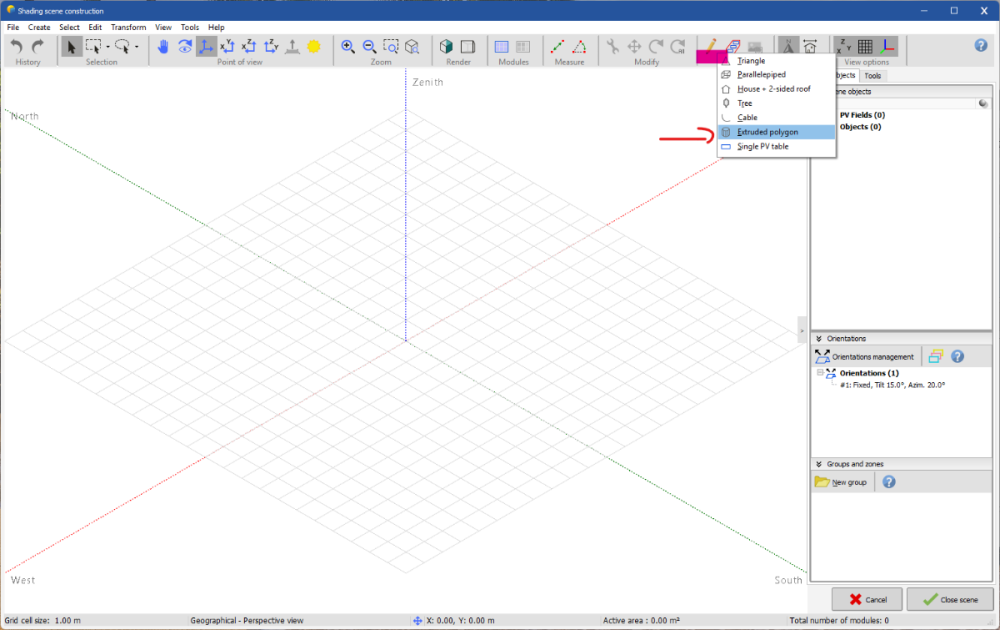-
Posts
211 -
Joined
-
Last visited
Recent Profile Visitors
The recent visitors block is disabled and is not being shown to other users.
-
Dear Nikoloz, In PVsyst Stand-alone, there’s no inverter component by design: the load (“User’s needs”) is defined as an energy demand (kWh), independent of whether the end-use is DC or AC. If you do have AC loads through a battery inverter, PVsyst’s recommended approach is to model it as an efficiency penalty. They also state the rationale: stand-alone (battery) inverters are fundamentally different from grid-tied PV inverters, so they’re not handled via the usual inverter database and are planned for a future implementation. Regards,
-

What does the white part of the Iso Shading Diagram representing?
Muhammed Sarikaya replied to PVsystUser's topic in How-to
Dear, The multiple curves visible comes directly from the shading factor table. See the help related: https://www.pvsyst.com/help/project-design/shadings/calculation-and-model/iso-shading-diagram.html This table is computed on a fixed grid (20° azimuth / 10° height),when fast calculation is choosed, see the help: https://www.pvsyst.com/help/glossary/shadings/shading-factor-table.html?h=table+fa And PVsyst always displays the isolines resulting from this calculation. However, the solar path never enters this region of the diagram that your show in green rectangle. Therefore, even though the iso-shading curves appear there, they do not correspond to any real shading situation. They are simply the graphical projection of the table-factor values in an area of the sun-position diagram that is never reached by the actual sun path. Only where the iso-shading lines intersect the solar trajectories can real beam shading occur. Regards, -
Dear Carlos, Today, with PVsyst version 8, you can mix any orientations you want. Regards,
-
Dear Nikoloz, Here are two videos for the standalone project: Regards,
-
Dear, You can disable this check in Near Shadings by going to: Tools → Disable field interpenetration check See below: Regards,
- 4 replies
-
- 3d shadings
- near shading 3d scene
-
(and 1 more)
Tagged with:
-

Inquiry on Simulating PV Façade Installations in PVsyst
Muhammed Sarikaya replied to Sara's topic in How-to
Dear Sara, You need to adjust your PV area to make it 1,100 m², but you also need to know its position on the façade. At first, you have two orientations — one for the façade and one for the rooftop. So, you need to create two orientations, and in the system, create two sub-arrays where you can assign the appropriate PV modules for each orientation. Then, in the 3D scene, when you place the PV modules, you need to select the initial orientation. If the PV module brand or size is different, Near Shadings will automatically detect it. What’s important to know is that Near Shadings is used to calculate shading losses on your PV surface. Once calculated, it applies the percentage of shading losses to the final simulation results. Regards, -
Dear Nikoloz, You can follow this tutorial: Regards,
-

Inverter Clipping (overload loss) for On-grid
Muhammed Sarikaya replied to Ziad's topic in Simulations
Dear Ziad, Without the project, I can’t know what the issue is. Could you please send us your project at support@pvsyst.com and explain what the issue is? Regards, Muhammed Sarikaya -
Dear Johan, From your error message, we can see that the 3D scene is larger than the declared system. I noticed that you are changing the number of trackers in batch mode, while also modifying the number of strings in parallel. There is a workaround to make this work: In PVsyst, go to Settings → Edit advanced parameters. In the search box, type “area”, then adjust the parameter as highlighted below. Regards,
-
Dear Zahra, If you know the exact global wiring resistance of your system and want a precise result, you can fill in the field "Global wiring resistance". Usually, the value for "Loss fraction at STC" is used when the exact global wiring resistance is unknown and you are just estimating it based on the STC value. For module losses: LID losses: Not applicable for PV modules based on n-dop wafers. You need to know the technology used in your PV module. Otherwise, we don’t have precise information regarding LID losses, since manufacturers don’t usually share this type of data. You can decide to add 1% or 2% depending on your confidence in the PV module. See our help page: https://www.pvsyst.com/help/project-design/array-and-system-losses/lid-loss.html Module Quality: Please read our help page: https://www.pvsyst.com/help/project-design/array-and-system-losses/module-quality-losses.html Module Mismatch Losses: Please also see our help page: https://www.pvsyst.com/help/project-design/array-and-system-losses/array-mismatch-losses/index.html Usually, this is also an approximation, based on your assessment of the PV module quality and the variability between them. Regards,
-
Dear Caio, Thank you for your suggestion to improve the 3D feature in PVsyst. For your first suggestion, I recommend trying the “Pen – Extruded polygon” tool (see below). It lets you draw a complex shape on the ground plane and extrude it to whatever height you need. Let me know if this helps. Regards, Muhammed Sarikaya
-
Dear Zahra, For a stand-alone project, which is generally small and simple, we don’t represent the inverter, because the main focus is to understand how the PV modules, along with the batteries, will meet the users’ electricity needs. This is why it’s not possible to define an inverter with specific parameters for each MPPT in such a project. For your first question: No, this is not possible in PVsyst. The software does not allow you to input pre-calculated PV production as an input. In a stand-alone system, you must define the PV fields, and PVsyst will calculate the production based on those components. For your second question: Could you tell me which parameter you would like to modify? Regards,
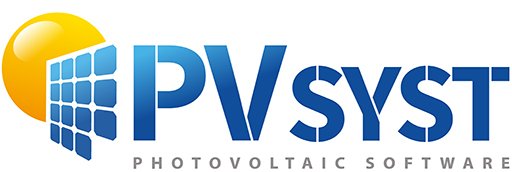
.png.5a0f08430bae173944a56977dd41765f.png)
